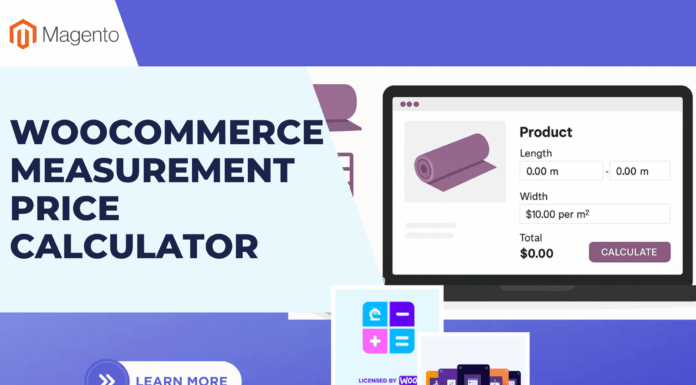
It’s no secret that people spend a lot of time using their mobile devices. We see people constantly glued to their mobile devices everywhere we go, sometimes so captivated by whatever they are seeing that they are not actually looking where they are walking. There are staggering statistics to illustrate just how popular mobile devices are as well. Bain & Company published a survey showing that people interact with their phones an average of 13 times per hour or over 200 times per day!
Mobile phones are no longer just communication devices. For many, mobile devices are now the primary source for media, entertainment, news, shopping and more. A lot of important decisions are made in the palm of a hand which is why businesses have put such a huge emphasis on improving their presence on mobile platforms.
To help business owners understand why last load times are essential to mobile e-commerce, the team at Finestshops put together some tips and tricks on how to improve the mobile experience of your online store.
How important are mobile devices for e-commerce?

Merchants and brands need to consider mobile presence now more than ever, especially when it comes to selling their goods or services online. Online sales surpassed retail sales this past holiday in America and most marketers predict that this trend will continue. E-commerce is booming but a big reason for this is the mobile market.
Over 65% of all of today’s internet traffic now coming from mobile devices. In fact, mobile sales have surpassed desktop sales in Japan and the UK. At this pace, mobile sales will surpass desktop sales within the next few years in Australia, South Korea, Germany, America and Spain. Because of this, a properly optimized and functional mobile-friendly website is essential to maximize conversion.
Why you should optimize your online store for mobile devices

In today’s e-commerce market, it is not enough to just have an online store. Your store needs to have a properly designed and optimized mobile version to maximize conversion. Most e-commerce setups like Magento, WooCommerce, X-Cart, and Shopify allow your to purchase themes that are compatible with mobile devices. However, in many cases, this will not be enough.
As your store grows, it gets more bloated. You have to stay on top of it to make sure your store is running at its peak efficiency. This is because every extra second your mobile store takes to load, you lose sales. According to Google, 29% of smartphone users will immediately switch to another site or app if their needs are not quickly satisfied. Your online store has to work fast and look good on a variety of screen resolutions, browsers, and operating systems. If it doesn’t, customers who have bought from you before may not return and new potential buyers may leave before making a purchase.
How to test if your store is optimized for mobile devices

- Google Mobile-Friendly Test – Test how easily a visitor can use your page on a mobile device. Just enter a page URL to see how your page scores. Once the test is completed, you will get a quick snapshot of how Google sees your site on a mobile device on the right side. You will get links to detailed page load information as well as some helpful links on what it all means. If your website is not mobile friendly, you will get some red warning boxes as well as short descriptions as to what the problems are. Be aware that this test is not the be-all-end-all test for mobile optimization. Certain scripts can sometimes block the Google tests resulting in errors or no results.
- PageSpeed Insights – Once you determine that your website is mobile friendly, the PageSpeed Insights test should be your next step. Once complete, you will see two tabs at the top for Desktop and Mobile. This test will grade your optimization out of 100 and give you a green pass, a yellow needs work or a red fail grade. If your mobile grade is green or yellow, your site should be in a decent spot. If it is red, you should look into improving your store performance as soon as possible. Pay special attention to first byte load times and image optimizations. On mobile devices, these can critically slow down your website and lose you sales with every extra second the site takes to load.
- Test on multiple devices – The optimization and speed tests are a great way to get numbers and statistical feedback on how your mobile site holds up. However, you should definitely test your mobile store on as many mobile devices as possible while in your hand. At the very least, you should test your site on a recent version of Android and IOS, preferably on both a small mobile phone and large tablet. Another trick you can use is to use your regular PC/Mac browser and just shrink it to a mobile-like size. This will force your store to switch to the mobile version and give you a good idea of what it will look like on the phone.
How to make your online store faster on mobile devices
- Create a separate theme for mobile – We recommend that you design your website layout with mobile in mind. The best case scenario would be to run 2 separate child themes for mobile and desktop. This should be standard practice for those getting the look of their site custom build from scratch. In most cases, however, you will be using a pre-built theme for your online store. A lot of these themes say they are mobile friendly but once you start changing round elements and modifying it to your liking, this may change. Â
- Optimize your images – One of the biggest mobile speed killers we see is poor image optimization. Webmasters and content managers generally want to pair their content with large, beautiful images. However, they often forget that these high-resolution images are massive in size and take quite a bit of time to load on desktops, never mind mobile devices. Images absolutely need to be optimized by either decreasing their resolution size or saving them at a lower quality through tools like photoshop which can drastically decrease image sizes and in turn increase load times. This goes double for product images. If you show 5 thumbnails of products on the main page and they are not optimized, you are essentially forcing a mobile phone to load 5 huge images all at once, which will simply drive potential buyers away.
- Show only essential elements on the main page – The more content you add, the slower and more complicated the website gets. In our experience, it is always best to work towards creating a balance of content and simplicity, especially on the front page of the mobile site. If possible, eliminate certain elements on the mobile version of your site so mobile devices only see the most important information an load quicker.
- Make sure there is as little scrolling as possible – To follow up on the point above, no one wants to scroll through their phone for longer than a few seconds to find the information that they need. Keep your images as thin as possible, keep the content short and focus on your calls to action and products. More often than not, a user checking out your site online is either looking for some quick info or is already interested in purchasing something. They likely do not want to read a full length write up about your history. Keep it simple and allow users to get the most important information as quickly as possible. This will also increase the load times as there will just be fewer things to load.











![[SALE OFF] Discount 30% All Premium Extensions On Christmas And New Year 2025 christmas-and-new-year-2025](https://landofcoder.b-cdn.net/wp-content/uploads/2024/12/christmas-and-new-year-2025-1-218x150.png)






